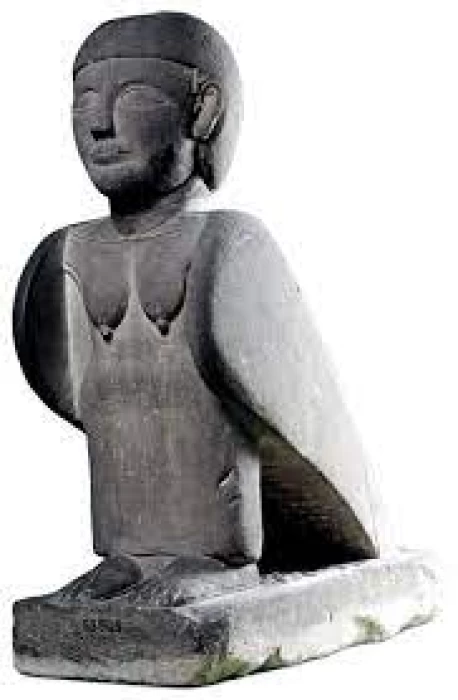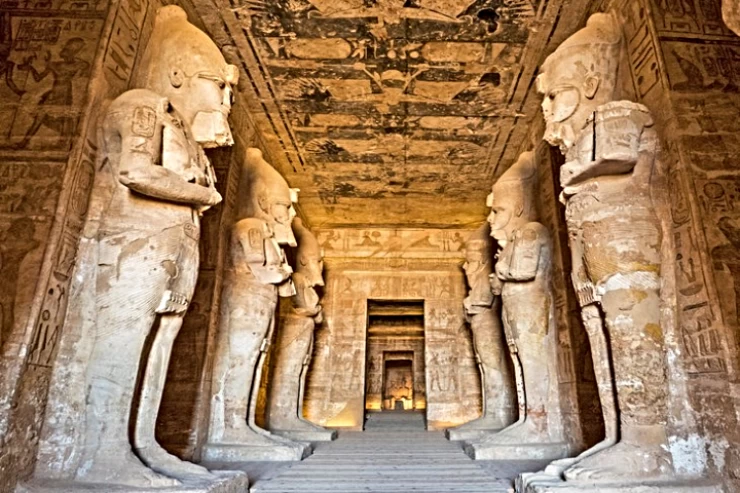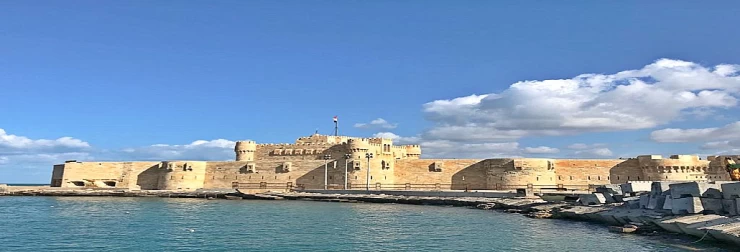
The Kushite period
The Kushite rulers' last period of dominance is known as the Meroitic period, after the royal cemetery there. Even though Meroe had long been one of the key cities of the Kushite state, the royal burial was transferred there from Napata in the third century B.C.E. This change roughly accompanied the introduction of Greek culture to Egypt after Alexander the Great's conquest of the nation.
The Kingdom of Kush quickly came under the influence of the emerging Greco-Egyptian culture, which gave its later phases a unique personality. As opposed to the Napatan period before it, which was inspired by Pharaonic civilization. With control of the commercial routes along the Nile valley from Central Africa to Ptolemaic and Roman Egypt, the Kushite kingdom prospered, with its rulers and ruling class benefiting financially.
Throughout the Meroitic period, Egyptian elements introduced into Kushite royal burial practices under the early Napatan kings were retained and reinterpreted. The sculpture and architecture of the period show much influence from the Greek and the Greco-Roman world. The fine pottery decorated with geometric forms and floral and animal motifs shows a similar influence.
The last periods of Kushite kingship are referred to as "Meroitic" because of the royal cemetery at Meroe. Despite the decipherment of the Meroitic alphabet, the language is still not fully understood. This wall originates from one of the diminutive pyramids with steep sides and chapels where the kings and queens were interred. Most likely, it belonged to Queen Shanakdakhete, the first female monarch. She is shown seated here with a prince and is shielded by an eagle-headed Isis. Rows of offering carriers and scenarios from rites, such as the queen being judged in front of Osiris, are in front of her. The reliefs have their own, uniquely developed qualities despite being in an Egyptian-looking style.
Long before the eighth century B.C.E., the term "Kush" or "Kushite" was used to describe Nubian governing structures. The Twenty-fifth Dynasty marked the beginning of Egypt's first significant contact with outside cultures, and by 715 B.C.E., Nubian monarchs had brought an end to Egypt's divided polity. But in Egypt, Kushite rule was short-lived. The final Kushite monarchs, Taharqa and Tanutamun, retreated to Nubia in the face of an Assyrian invasion. They ruled the area up to the fourth century C.E., and they and their descendants are buried in el-Kurru, Nuri, Gebel Barkal, and Meroe.
Is it Dangerous to go to Egypt in the winter?
If you're looking for a truly unique Egypt vacation, look no further than Egypt travel packages! This fascinating country is home to a huge variety of historical and cultural attractions, making it the perfect destination for travelers of all interests.
One of the most popular trips in Egypt is the Great Pyramids of Giza. These iconic structures have been standing for over 4,500 years and are one of the Seven Wonders of the World. Visitors can explore the pyramids, learn about their history, and even climb to the top of one of the pyramids for an unforgettable view.
One of the best ways to explore all that Egypt has to offer is on Egypt shore excursion. These are tours that are typically offered by cruise lines when your ship is in port in Egypt. Shore excursions offer a great way to see the country and its many highlights in a short amount of time.
At Luxury Tours Egypt, we offer a wide variety of tours that are perfect for those looking for a once-in-a-lifetime experience. From our iconic Pyramids Tour to our Valley of the Kings Tour, we have a tour that will suit your needs and budget.
Latest Articles
Admin
Seabourn Sojourn Cruise Stops in Safaga Port
The Seabourn Sojourn, the flagship vessel of Seabourn Cruise Line's ultra-luxury fleet, was built in 2008 at the T. Mariotti shipyard in Genoa, Italy. Measuring 198 metres, it can accommodate up to 450 guests in its 225 spacious all-suite staterooms.
Admin
Norwegian Sky Cruise Stops in Safaga Port
Norwegian Cruise Line operates a cruise ship called the Norwegian Sky. It was constructed in 1999 and can accommodate 2,004 passengers in addition to 878 crew members. The ship has several dining establishments, lounges and bars, a spa and fitness center, swimming pools, and a number of entertainment areas.
Admin
Explora II Cruise Stops in Safaga Port
Explora II, the second vessel in the Explora Journeys fleet, sets sail in 2024 to redefine luxury cruising. With 461 ocean-front suites, 9 culinary experiences, and 4 pools, this haven of sophistication and sustainability promises an unforgettable "Ocean State of Mind" journey to inspiring destinations.
Admin
Mein Schiff 6 Cruise Stops in Safaga Port
The Mein Schiff 6 is the latest cruise ship in the renowned TUI Cruises fleet, offering passengers a luxurious and sophisticated cruise experience. At 315 metres long, this floating resort features a range of dining options, entertainment, and recreational facilities, including a spa, fitness centre, and sports amenities.
Admin
Mein Schiff 4 Cruise Stops in Safaga Port
When the Mein Schiff 4 cruise ship docks in Safaga, Egypt, passengers are granted access to a realm of ancient wonders. Aboard this state-of-the-art vessel, guests can embark on meticulously curated shore excursions that showcase the region's most iconic landmarks, including the Giza Pyramids, the enigmatic Sphinx, and the remarkable tombs and temples of the Valley of the Kings in Luxor.
Admin
MS Europa Cruise Stops in Safaga Port
The Silver Moon, Silversea's latest flagship, is a luxury cruise ship that offers an exceptional travel experience for Venezuelans exploring Egypt. With a capacity of 596 guests and an impressive 40,700 gross tonnes, the Silver Moon maintains the small-ship intimacy and spacious all-suite accommodations that are the hallmarks of the Silversea brand.















